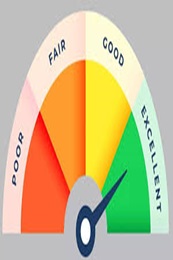Difference Between Home Loan and Loan Against Property
April 15, 2025

Owning a home is a dream for many individuals, but it often requires financial assistance in the form of loans. When it comes to financing your home, the most popular option is availing a Home Loan. With a home loan, you can cover up to 80% - 85% of the total cost of the property, provided you’re eligible.
That said, we’ve seen a lot of queries pertaining to loan against property where many of you have asked us whether loan against property (LAP) is an alternative to home loan. Well, it’s not. Home loans and LAP are entirely two different credit products designed for different purposes.
In this blog, we have aimed to put this debate to rest, once and for all. So, let’s dive in!
Understanding Home Loans
A home loan is a secured loan specifically designed for purchasing a house or property. Most banks offer loans up to 80% - 85% (based on your eligibility) of the cost of the property. The loan tenure, usually, is up to 20 years. The interest rate is comparatively lower than personal loans. However, home loans come with end-use restrictions – meaning, you can use the loan amount only to buy a house or property and not for anything else. Your house acts as a collateral till the loan is repaid. Some of the key features of home loans are:
- Loan Amount: Home loans typically cover up to 80% of the property's value. The loan amount is finalised based on various factors such as income, credit score, and repayment capacity, among others.
- Repayment Tenure: Home loans offer long repayment tenures that can extend up to 20 years.
- Interest Rates: The interest rates on home loans can be either fixed or floating. Fixed interest rates do not change during the tenure, while floating interest rates can change based on RBI’s or the bank’s policies.
- Tax Benefits: One of the major advantages of home loans is the tax benefits they offer. Under Section 24(b), Section 80(C), Section 80EE and Section 80EEA of the Income Tax Act, borrowers can claim deductions on both the principal amount repaid and the interest paid on the loan, subject to terms and conditions.
What is Loan Against Property (LAP)?
A loan against property, also known as a mortgage loan, is a type of secured loan that allows you to avail funds against your existing property. The property acts as collateral for the loan, thereby reducing the risk for the lender. So, what’s the difference between LAP and a home loan? The primary difference being unlike home loans, LAP doesn’t come with end-use restrictions. You can use the loan amount to meet any other financial requirements like funds for medical emergency, wedding, business expansion, etc.
Here are some key features of a loan against property:
- Loan Amount: The loan amount is determined by the market value of the concerned property. Typically, banks offer up to 70% of the property's value as a loan.
- Repayment Tenure: Similar to home loans, loans against property also come with extended repayment tenures up to 15 years.
- Interest Rates: The interest rates on loans against property are generally lower compared to unsecured personal loans since these loans are backed by collateral.
- Utilisation of Funds: Unlike home loans that can only be used for purchasing or constructing a residential property, loans against property provide borrowers with more flexibility in terms of fund utilisation. You can use these funds for various purposes like business expansion, education expenses, medical emergencies, etc.
Home Loan vs Loan Against Property (LAP): A Quick comparison
| Home Loan | Loan Against Property | |
| Eligibility Criteria | To be eligible for a home loan, individuals must have a stable source of income and meet certain credit score requirements set by lenders. | In addition to income stability and credit score, lenders also consider factors such as the value of the mortgaged property and its legal status before approving a loan against property. |
| Loan Amount | Home loans offer higher loan amounts compared to loans against property since they cover up to 80% of the property's value. | The loan amount in a loan against property is limited to a certain percentage of the property's value, usually up to 60%. |
| Interest Rates | Home loan interest rates can be fixed or floating depending on the borrower's preference. Floating rates may vary over the loan tenure based on market conditions. | The interest rates on loans against property are generally lower compared to home loans since they are secured by collateral. |
| Repayment Tenure | Home loans offer longer repayment tenures, allowing borrowers to spread out their repayments over a longer period. | Similar to home loans, loans against property also come with extended repayment tenures, providing borrowers with flexibility in repaying their loans. |
| Tax Benefits | Home loans offers better financial advantages, as borrowers can claim deductions on both the principal and interest components of their home loan under Section 24(b) and Section 80C of the Income Tax Act, respectively. | Unlike home loans, tax benefits are not applicable for loans against property since they are utilised for purposes other than buying or constructing a residential property. |
| Utilisation of Funds | The funds from a home loan can only be used for purchasing or constructing a residential property. | Loans against property provide borrowers with more flexibility in terms of fund utilisation. They can use these funds for various purposes like business expansion, education expenses, medical emergencies, etc. |
Final Thoughts
In conclusion, home loan and loan against property are designed for different purposes. While home loan is exclusively meant for buying or constructing a house, LAP can be used for various financial requirements.
Buying a house has never been this easy! Avail Ujjivan SFB’s wide range of affordable home loan products and enjoy a hassle-free loan journey. From house purchase loan to plot loans and home improvement loans, we have it all! Alternatively, you can browse through Ujjivan SFB product suite - our wide range of financial products are designed to make your financial life better.
FAQs
1. What is the difference between a home loan vs loan against property?
A home loan is specifically designed for purchasing or constructing a residential property, while a loan against property allows borrowers to avail funds against their existing property for various purposes.
2. When comparing home loan vs loan against property which offers higher loan amounts?
The loan amount depends on various factors. For home loans, banks will check your loan eligibility by evaluating various parameters. For LAP, banks will additionally check the value of the property before deciding on the final amount,
3. When comparing home loan vs loan against property, is there a difference in the tenure?
Both home loans and loans against property come with extended repayment tenures. However, home loans have a longer repayment tenure, typically up to 20 years.
4. How is the loan amount for loan against property arrived at?
The loan amount for this type of loan is arrived at by the market value of the property being mortgaged.
5. Can I transfer my existing home loan or loan against property to another lender?
Yes, you have the option to transfer their existing home loans or loans against property to another lender through balance transfer. But opt for a balance transfer only if you’re not at all satisfied with your current bank’s services/terms and conditions.
Latest Blogs

Telangana Housing Board & KPHB Colony: A Guide to Affordable Urban Housing in Hyderabad
March 14, 2025
As Telangana continues its rapid urbanisation journey, two key housing entities—Telangana Housing Board (THB) and Kukatpally Housing Board Colony (KPHB)—have played critical roles in shaping the state's real estate ecosystem.

Does Checking CIBIL Score Frequently Lower Your Credit Points?
April 07, 2025
Imagine you're planning to apply for a home loan, a credit card, or even a car loan. Naturally, you want to ensure your CIBIL score is in good shape before proceeding.

Explained: Can NRIs Buy an Agricultural Land in India?
April 03, 2025
Real estate investment is often a top priority for Non-Resident Indians (NRIs) looking to retain strong financial ties to India.

How to Improve Your CIBIL Score from 600 to 750: A Step-by-Step Guide
April 02, 2025
Your CIBIL score is like your financial reputation—banks check it before approving loans or credit cards. If your score is hovering around 600, you might face difficulties in securing credit or may get loans with higher interest rates.

What Happens When You Leave Your Savings Account Unused?
April 01, 2025
Imagine waking up one day to find that your hard-earned money is locked away and inaccessible. Sounds stressful, right? This is precisely what happens when you leave your Savings Account inactive for too long.



